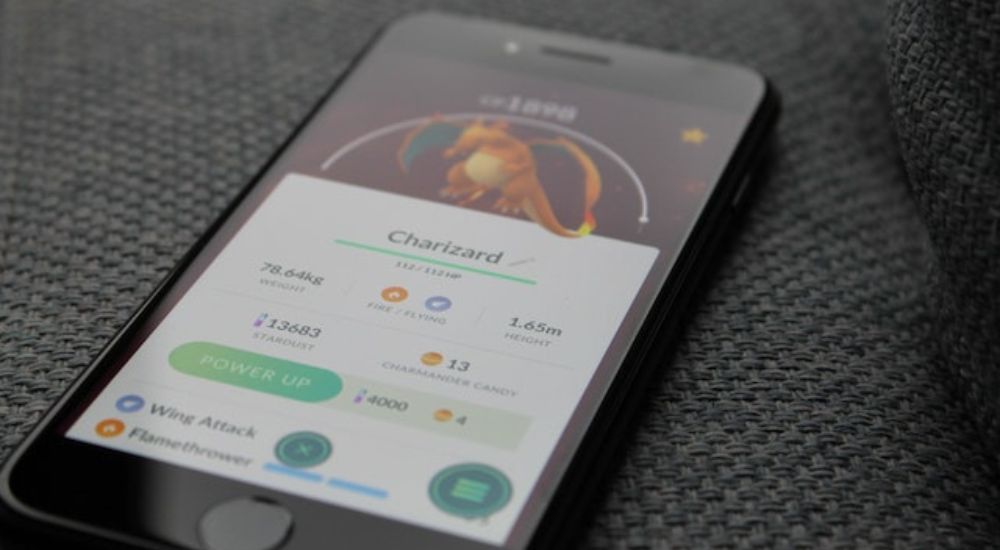The incredible world of games seems to always be within our reach, something that was unimaginable just 15 years ago. To access them, all we need to do is whip our phones out of our pockets and have some fun!
With games becoming more and more a part of our daily lives and with many companies reporting record-breaking profits, it’s not unusual to wonder: how much do gaming apps make per day?
In this article, we’re going to tell you how much the highest-grossing games have generated on a daily basis, explain how much lower-end games can generate, and, lastly, go over the most important factors that affect a game’s revenue.
Mobile game revenue: how much do gaming apps make per day?
When it comes to gaming apps, the revenue they generate can vary significantly depending on various factors. In 2021, the average mobile game made around $1 million in revenue per day. However, it’s essential to note that not all gaming apps earn the same amount. Some highly successful apps can earn even more, while others might earn less.
Revenue is often generated through in-app purchases, ad revenue, or even consumer spending on mobile gaming. Both free and paid apps contribute to the mobile gaming industry’s revenue, with top-grossing apps earning hundreds of millions of dollars in revenue per year. The number of downloads, the app’s genre, and its overall popularity play crucial roles in determining how much money an app makes.
Developing a mobile game app can be profitable, but it requires careful planning, effective monetization strategies, and a well-executed development process. Whether on the Apple App Store or Google Play, the mobile gaming market continues to grow, providing ample opportunities for game developers to earn a substantial income from their apps.
The top-end: the highest-grossing games
According to Wikipedia, the 8 highest-grossing games are as follows:
| Game | Total revenue | Days since launch | Revenue per day |
| Honor of Kings | $14.667 billion | 2573 | $5.7 million per day |
| Monster Strike | $10 billion | 3413 | $2.93 million per day |
| PUBG Mobile | $9 billion | 1729 | $5.2 million per day |
| Puzzle & Dragons | $8.578 billion | 3948 | $2.17 million per day |
| Clash of Clans | $8 billion | 3784 | $2.11 million per day |
| Pokémon Go | $7.76 billion | 2350 | $3.3 million per day |
| Candy Crush Saga | $7.456 billion | 3680 | $2.02 million per day |
| Fate/Grand Order | $6.3 billion | 2692 | $2.34 million per day |
As you can see, the daily revenue potential of gaming apps is massive. Most highest-grossing games are free-to-play (F2P), with each boasting an insanely high player count throughout the day. Pokémon Go, one of the most played AR games of all time, consistently has over 200,000 concurrent players, and PUBG Mobile is accessed by around 30 million unique players every day.
A large portion of the revenue generated by these games comes from in-app purchases (or IAPs), which are usually affordable and offer numerous boosts to players, who are happy to spend some bucks for a small advantage.

But how do less popular games compare to these mobile gaming behemoths?
The low-end: how do they compare?
Truth be told: for every 100 games out there, only a handful are making enough money for their developers to make ends meet. However, this doesn’t mean they can’t generate some revenue.
A recent survey states that the average iOS game revenue was $86,315 in the past 12 months – or $236.47 a day.
Nevertheless, the median lifetime revenue was only $2,400, and $1,100 over the last 12 months (or $3.01 a day), which is not very promising. This means that 50% of the games earned below the threshold, and 50% earned above it.
The same research states that 25% of the games made no more than $140 over the same 12-month period. On the other hand, more successful games made much more – the top 25% earned at least $10,675 (or $29.24 a day) during the past year.
That survey also found that games developed by multiple people got significantly better returns per developer, and the values stopped growing significantly once the team reached 10 or more members.
Another recent research by Statista shows there are around 500 thousand gaming apps in the Google Play Store alone. Considering this value will only grow by tens of thousands during this next year, standing out from the crowd becomes a top priority for game developers.

Which factors affect the revenue of a mobile game?
There are several factors and key performance indicators (KPIs) that can contribute to the revenue generated by a mobile game app. These can include:
- Daily average users (DAU): it represents the number of unique players that open your game application every day;
- The daily average revenue per user (DARPU): this KPI represents the total daily revenue divided by the DAU;
- The type of your game: some specific types of games are more prone to generate higher amounts of revenue.
- Casual and mass appeal games: these games are usually very simple to play, and work best for occasional, short gaming sessions, being the favorite pastime of many during their commutes. Names like Candy Crush Saga, Angry Birds, and the defunct Flappy Bird are considered casual titles. Typically, these games have a high DAU, but a lower DARPU;
- Niche and hardcore games: these games are different in that they require more time commitment. Role-playing games, digital collectible card games (like Hearthstone), and strategy games are some of the games within this category. Despite having a lower DAU, they compensate by having a much higher DARPU as players typically invest more time and money into them.
- The platform of choice: even though both iOS and Android are viable options, the latter has a staggering 75% of the global mobile phone market share, holding as much as 85% of the market share in countries such as Brazil, India, and Vietnam. In other words, you are more likely to generate more money by targeting Android over iOS, though it would be ideal to develop for both platforms at the same time;
- The game’s in-app purchases (IAPs): it’s very common for gaming apps to offer IAPs, such as extra lives, extra energy (or faster energy recharge), in-game currency, cosmetic microtransactions, bundles, battle passes, and much more. Most IAPs are designed to be affordable and offer great value to the player, being one of the main assets in revenue generation;
- In-game advertisements: they might be annoying (especially when they pop up out of nowhere) but are vital to many F2P games out there. Clever game developers will offer you a bonus for watching a video advert, granting something in return to the player, which helps ease their inconvenience. In many games, however, it’s possible to turn ads off permanently for a small price, which developers typically sell as an IAP;
- Marketing: we all agree that not a soul will play your game if no one knows about it, right? Planning and executing a solid marketing plan is vital to maximizing your game’s revenue by increasing its visibility, which in turn boosts DAU and potentially the DARPU. This includes contacting gaming personalities for a sponsorship much like Raid: Shadow Legends does, and even doing some social media work to stand out from the massive crowd.

How much do gaming apps make per day: closing thoughts
In the end, even though the game development industry is a multi-billion enterprise, top-end games heavily skew the average by a lot, giving many the impression it’s easy to get rich by creating games. Despite that, it’s 100% possible (albeit hard) to create games that will generate enough revenue to live on your own as a full-time game developer/designer/artist!
If you don’t know how to get started, take your time and give our Unity starter guide a read. Keep in mind, however, that game development is a long and arduous journey. This is true especially if you’re going to create a game on your own, as you will need to develop the code, design and create all the game assets, and then showcase the game to the world. Even experienced developers often take many months to create simple games from scratch!
But what if there was an easier way to get a high-quality game without going through this lengthy and drawn-out process? Well, your best bet would be to work with experienced professionals and, in this case, we are here to help you!
We are Main Leaf, a professional game development studio that works on demand. We create fantastic games following our clients’ specifications and deliver high-quality projects right into their hands. Not only that, but we have a wide and all-encompassing roster of 70+ passionate professionals, who will design and develop your game from scratch just for you!
With over 10 years of experience in the game development industry, we are more than qualified to take on the development of your upcoming game. If you’re interested in working with us, request a game quote right now. We’d love to hear from you!

